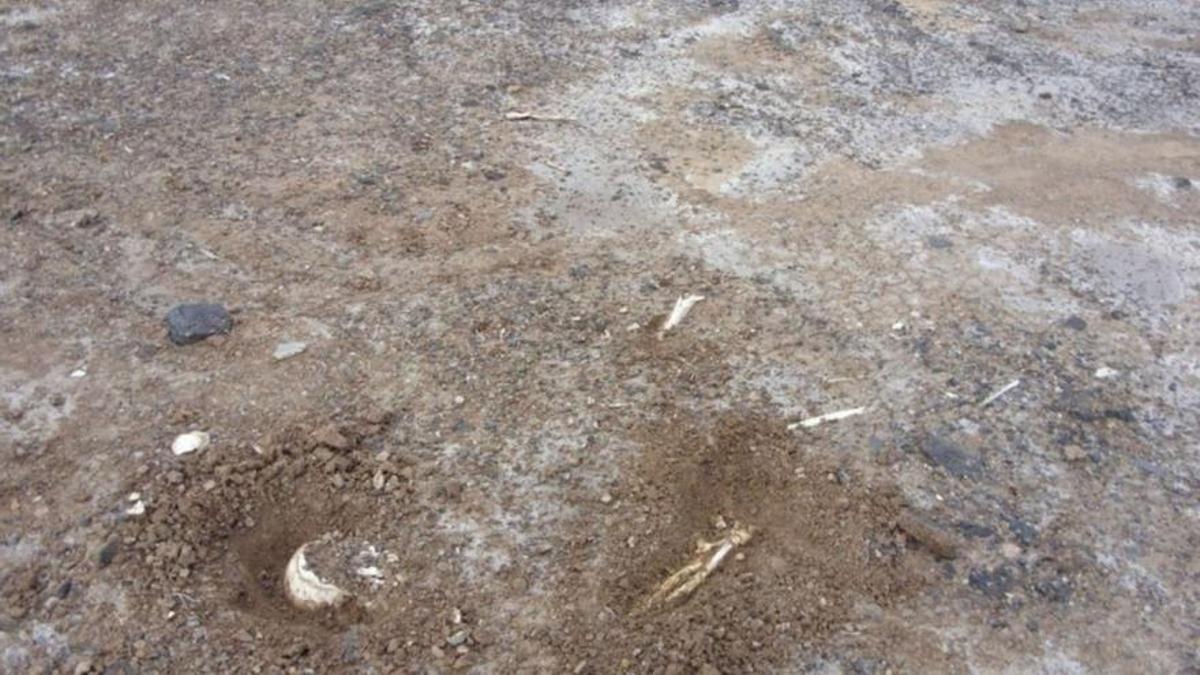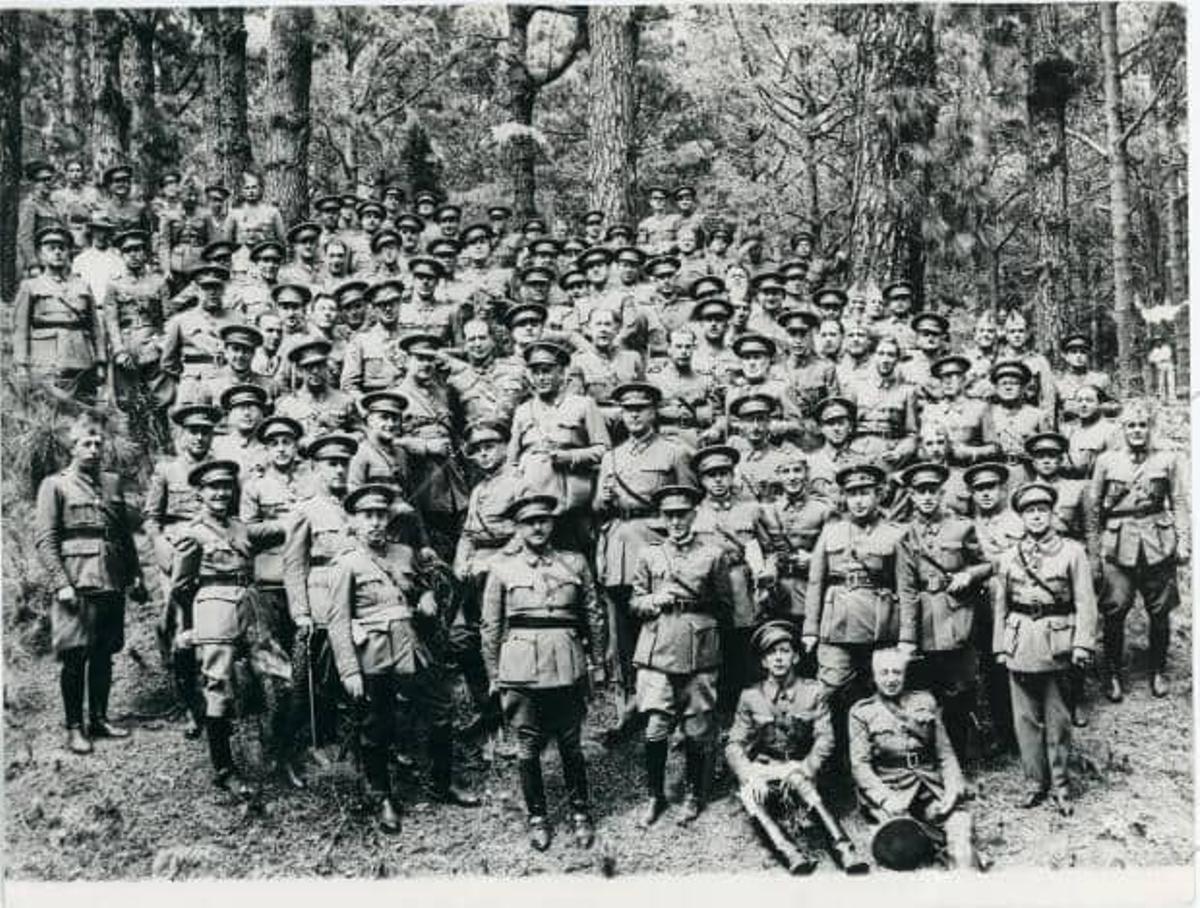Tenerife continues to be unable to find graves with human remains of the disappeared during the Civil War and the Franco dictatorship (1936-1975). The third attempt, carried out between November of last year and the beginning of this 2024 in the municipality of Los Silos, has ended with no trace of the repressed.
The results of the archaeological intervention in a cave in Caleta de Funche, on the coast, financed by the Cabildo de Tenerife under the policies for recovering historical memory, have just been revealed. “The work was carried out without finding human bone remains,” concludes the balance of the excavations led by Gema González, a PhD in Archaeology from the University of La Laguna.
The two previous explorations on the Island in search of graves with people killed and disappeared by the Francoists and their supporters after the coup d’état in July 1936 also failed. Both were conducted in 2011.
One of these campaigns took place in the Teide National Park. A team coordinated by the Association for the Recovery of Historical Memory of Tenerife searched in “bucios” (volcanic tunnels) and “simas” (large and deep cavities) in the Cañadas del Teide, like Maja and Los Helechos.

Human remains found on the coast of Los Silos. / El Día
It is suspected that the remains of some of the more than 400 individuals who were eliminated in Tenerife by the coup authorities and the Francoist militias rest in the Teide. Among them could be José Carlos Schwartz, democratic mayor of Santa Cruz when the military insurrection took place, which started precisely in the Archipelago, where Franco held the highest military position. However, not even the slightest trace was found.
No luck was found in the other attempt 13 years ago. Teams searched in the cemetery of San Juan in La Laguna, where oral tradition placed the remains of the group known as the 11 disappeared of San Juan. During the Civil War, between 1936 and 1937, the rebel soldiers and their followers murdered eleven individuals from Tenerife linked to leftist political parties and unions. It is believed that they were buried in a mass grave in the cemetery of La Laguna.
The two previous explorations on the Island in search of graves with individuals killed and disappeared by the Francoists also failed
These are their names: Cecilio de Armas Fernández, Domingo Cruz Cabrera, Manuel Luis Figueredo Rojas, Domingo García Hernández, Saturnino González Rodríguez, Vicente Hormiga Mederos, Juan José Martín Escobar, Alfonso Martín Power, Alfredo Mederos Galán, Guetón Rodríguez de la Sierra Melo, and Jacinto Silvera Peña. The archaeological work carried out between February and March 2011 did not find the remains of any of them.
In contrast to what has happened in Tenerife, graves have been found in La Palma and Gran Canaria. Investigations have led to the exhumation of 51 victims in these two islands out of the estimated 2,000 caused by the Franco regime across the Archipelago. They were discovered specifically in El Pinar de Fuencaliente in La Palma, and in the wells of Arucas and Tenoya in Gran Canaria.
The new attempt in Los Silos is one of the twelve projects related to historical memory that received funding from the Cabildo de Tenerife in the last term, with socialist Pedro Martín as president.

Meeting of the military of Tenerife under Franco’s command in preparation for the coup d’état in the pine forests of La Esperanza / El Día
In total, the island Corporation allocated 112,000 euros to municipalities to implement initiatives aimed at ensuring the recognition and dignification of the Canarian victims of the Civil War and the Franco regime, promoting the investigation of the facts, and ensuring institutional support for the defence of historical-democratic memory.
Why was a new attempt made in Los Silos after the unsuccessful searches in Teide and La Laguna? The discovery between 1972 and 2010 of the human remains of five people in a wasteland on the coast of Los Silos, nearInvestigation of Historical Human Remains in Los Silos, Tenerife
Excavations in the Piedra de las Viejas cove and Funche Creek opened up numerous questions. Unearthed by earth-moving equipment and erosion caused by the sea and wind, the findings demanded further examination.
During the previous term, the Los Silos City Council initiated a project, funded with €8,800 by the Cabildo and an additional €1,200 from the Municipality itself, to ascertain whether the bodies discovered in 1972, 1979, and 2010 belong to the first victims of Francoist repression on the island of Tenerife.
Researchers aimed to uncover whether there might be more missing persons buried in that area. The investigation results could only conclude that three of the human remains, excavated in 1979 by the shovels, were linked at the time to the Civil War by the Icod de los Vinos Court. The fifth body showed no signs of a violent death.
A thorough study of the documentation preceded the archaeological dig that commenced on November 13th last year at the entrance of a seven-meter-long cave and three meters deep in Funche Creek, close to where the aforementioned bones of five individuals were found. The experts sought to determine the possibility of a mass grave with additional bodies at this particular stretch of the Silos coast. The urgency of the survey was due to the erosive effects of the sea.
The archaeologists initially removed soil and garbage – plastics, glass, cans. Subsequently, they encountered the remains of a wall composed of blocks from an old hut used as a shelter by Los Silos residents. The exploration continued until a depth of one meter was reached. There was nothing to be found.















